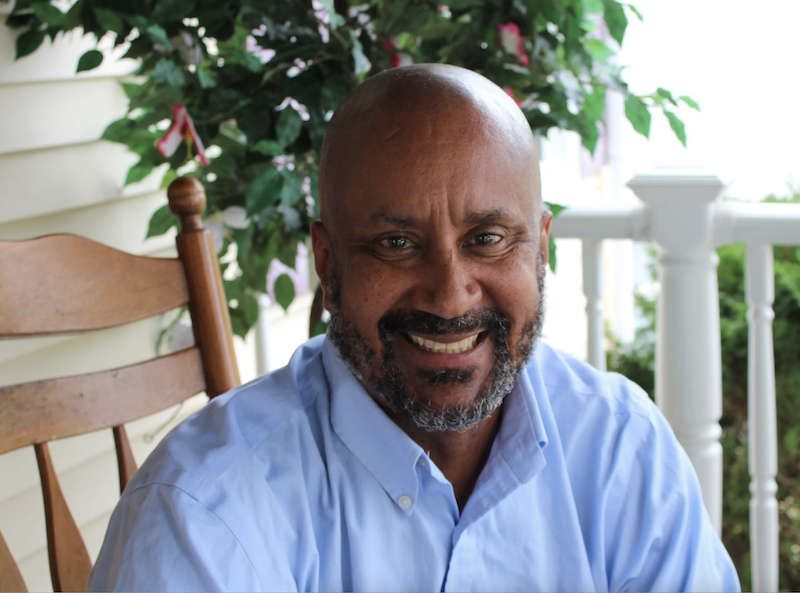It felt like a big deal to see Anthony Salandy, of the National Harm Reduction Coalition (NHRC), speak at a recent event in Washington, DC, about reducing smoking-related harms.
The panel, held in May, marked the relaunch of the Foundation for a Smoke-Free World, now renamed Global Action to End Smoking. And as Dr. Salandy said then, “Traditional harm reduction has not focused on smoking cessation. It’s not something that the movement has typically done.”
But he participated, “because I believe that harm reduction and smoking cessation can go hand in hand.”
“NHRC plans to work with Global Action to End Smoking to develop and implement an education and dissemination campaign.”
NHRC, one of North America’s leading harm reduction organizations, will be taking this much further, as Salandy, its senior director of development and business strategy, explained in a subsequent interview.
“NHRC believes in a harm reduction-informed approach to smoking cessation,” he told Filter. “NHRC plans to work with Global Action to End Smoking to develop and implement an education and dissemination campaign, with the aim of reducing the numbers of people who smoke cigarettes.”
This work will be guided by “centering people with lived and living experience and actively listening to them,” he said. “Reparative justice is important to communities that have been harmed by the promotion and sale of combustible tobacco, and this work is within NHRC and Global Action’s mission.”
Salandy has lived experience of his own with tobacco use. “I first started smoking cigarettes in the Army,” he related. “Back in the early ‘80s, during Basic Training, soldiers would be provided complimentary small packages of cigarettes from tobacco companies’ promotional representatives. Cigarette breaks were a common occurrence back then.”
“I stopped smoking using a harm reduction approach,” he continued. “Primarily, nicotine replacement therapy. Nicotine patches and [the medication] bupropion, later on, served as aids to quitting.“

Dr. Anthony Salandy
More recently, many other smoking-cessation tools—including vapes, heated tobacco products and nicotine pouches—have become available and demonstrated efficacy. That’s great news, when smoking remains the world’s biggest cause of preventable death.
Almost half a million people in the United States die of smoking-related causes each year, and some have asked why “traditional” harm reduction organizations don’t more squarely center smoking in their messaging and work.
“It is imperative that harm reduction organizations have focus on the immediate harm: overdose and overdose death.”
But the US overdose crisis is an obvious and compelling reason, as Salandy emphasized. Unlike with smoking, which typically claims a life only after many years, death from overdose is immediate, with people’s risk acute.
“It is imperative that harm reduction organizations have focus on the immediate harm: overdose and overdose death,” he said. “When you have 120,000 people die from accidental drug overdose in a 12-month period, getting naloxone widely distributed may take up 100 percent of your focus, and for good reason.”
Salandy also hinted at suspicion that people in general harm reduction may feel toward groups whose main focus is tobacco. Indeed, he dislikes the term “tobacco harm reduction,” which implies, he said, that tobacco “has a flag-bearing front position in the harm reduction movement.”
“Harm reduction is a movement for social justice that includes a set of transformative public health strategies, practices and principles to address the harms of a system that often stigmatizes certain groups of people and/or communities,” he explained. “Traditional harm reduction has always focused on reducing harm for people who use drugs and communities impacted by the War on Drugs. For me, a harm reduction approach can inform us about social factors that work in a syndemic manner to increase smoking risk and tobacco-related disease burden.”
“Some in the harm reduction movement,” he cautioned, “see other public health movements—e.g., tobacco cessation—at the ready to co-opt the term ‘harm reduction’ for their own purposes. Possibly leverage the social capital that traditional harm reduction has garnered over decades of grassroot work.”
How to make sense of funding dynamics, in the interests of furthering smoking cessation efforts within the harm reduction movement?
As if these potential barriers weren’t enough, there’s the related question of industry involvement and funding sources. The fact that large companies—including, though by no means limited to, those that sell cigarettes—profit from safer nicotine products hasn’t always sat easily with the left-wing harm reduction community.
There’s industry funding in advocacy and related work, too. Global Action on Smoking’s existing funds originated from Philip Morris International—though the rebranded organization has now ended that relationship, adopting a policy of no longer accepting tobacco or consumer nicotine industry funding. Donors to the nonprofit behind Filter—which receives grants from Global Action—also include tobacco and vape companies.
At the same time, harm reduction organizations have often received funding from pharma companies, which profit from products used in other areas of harm reduction. And the public health organization and harm reduction supporter Vital Strategies, for example—funded by anti-vaping billionaire Michael Bloomberg—has supported bans and restrictions on products that reduce smoking harms, in the US and overseas.
How to make sense of such dynamics, in the interests of furthering smoking cessation efforts within the harm reduction movement? For his part, Salandy draws distinctions between different corporate interests.
“The involvement of the tobacco industry in harm reduction efforts is often met with skepticism and distrust, even among traditional harm reductionists,” Salandy said. “This skepticism stems from the historical and ongoing practices of the tobacco industry, which have included misleading the public about the health risks of smoking and engaging in aggressive marketing tactics. As a result, many public health advocates and organizations are wary of the industry’s motives and the potential for conflict of interest in promoting smoking cessation products like e-cigarettes.”
“In contrast,” he continued, “harm reduction products for other drugs, such as clean needles and opioid substitution therapies, are often produced and supported by pharmaceutical companies. These companies have also financially supported harm reduction organizations. While pharmaceutical companies are not without their own controversies, they are generally perceived as more credible and trustworthy in the context of harm reduction. This perception is partly because their involvement is seen as part of a broader commitment to public health and disease prevention, rather than a strategy to maintain or grow a market for harmful products.”
“Tobacco companies must work harder to repair harms they caused in our communities,” he said, “and communities must work to hold tobacco companies accountable that harm doesn’t happen again.”
“Syringe service programs and substance use disorder treatment and recovery efforts should add meaningful smoking cessation strategies to their programs and services.”
Given these tensions, the fact that a harm reduction organization as significant as NHRC is committed to working on harm reduction for smoking is truly encouraging.
“I am hopeful that Global Action will continue its promising outreach to the harm reduction community,” Salandy said. “Harm reduction practices and principles can and should be used to inform smoking cessation activities, especially for people who use [other] drugs. To be more specific, syringe service programs and substance use disorder treatment and recovery efforts should add meaningful smoking cessation strategies to their programs and services.”
Such strategies make perfect sense, with very high rates of smoking among people who use state-banned drugs. It’s been a growing subject of discussion in harm reduction circles, and voices like Canadian safe supply pioneer Dr. Mark Tyndall have pointed out how programs often omit a tactic as obvious as introducing participants who smoke to vapes. Filter has even reported on harm reduction programs with anti-vaping policies.
Salandy is clear that “by providing access to reduced-risk nicotine products, offering education and support, and ensuring policy and funding support, these programs could significantly improve health outcomes for people who use drugs.”
He went on to detail the grossly disproportionate impact of smoking-related harms on some of the marginalized populations prioritized by the harm reduction movement. How Black people in the US don’t smoke at higher rates than other demographics, but are more likely to die of smoking-related diseases. How LGBTQ people, and people with substance use disorder or mental health conditions, all smoke at much higher rates than the general population.
Emphasizing a low-barrier, comprehensive approach to “address the intersecting factors contributing to high smoking rates,” including “mental health support, quality health care, poverty alleviation,” Salandy said that “targeted efforts and resource allocation are crucial to achieve health equity and reduce the disproportionate burden of tobacco use among these marginalized communities.”
There should be much more to come—both from the specific collaboration between NHRC and Global Action, and in the wider sense of synergy between two movements that are closely related, but haven’t always worked together as closely as they might.
At present, Salandy said, NHRC doesn’t have a position on the proposed national ban on menthol cigarettes—a measure which Global Action supports as a means to save lives, but which groups like the Drug Policy Alliance and the ACLU question or oppose, on the basis of the lessons of drug prohibition and law enforcement targeting of Black communities.
This has the feel of a conversation that will grow, and it will be fascinating to see how the substance of NHRC and Global Action’s work together develops.
Salandy was also cautious on the questions of youth vaping and flavored vapes—routinely blamed for youth vaping, but central and often critical to adults’ attempts to switch from deadly cigarettes.
“On one hand, restricting flavors could discourage unintended use by vulnerable groups, such as adolescents and non-smokers,” he said. “However, overly stringent regulations may inadvertently hinder smokers from transitioning to the relatively safer alternative.” He called for more research, for a “nuanced approach,” and for regulators to “tread cautiously” to maximize benefits and minimize risks.
But this has the feel of a conversation that will grow, and it will be fascinating to see how the substance of NHRC and Global Action’s work together develops.
No one should suggest that harm reduction organizations divert scarce resources from the overdose crisis, or from other priorities Salandy identified, like health care, housing and ending stigmatization of people who use drugs.
Fortunately, it doesn’t have to be a zero-sum game. By integrating harm reduction for smoking into their messaging and practical work—given the funding to support that—harm reduction organizations can enhance their critical mission for the health, agency and rights of people who use drugs.
Top photograph by Mostafameraji via Wikimedia Commons/Public Domain. Inset photograph via National Harm Reduction Coalition.
The Influence Foundation, which operates Filter, has received grants from the Drug Policy Alliance, from Global Action to End Smoking, and from Philip Morris International. Filter’s Editorial Independence Policy applies.




